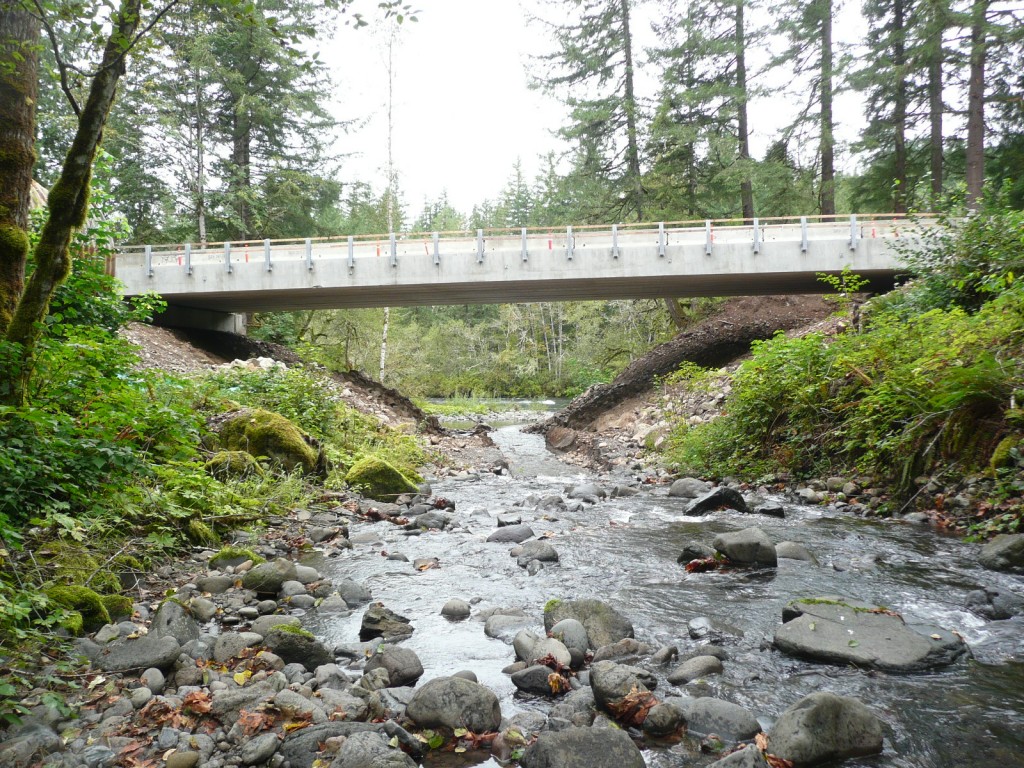The Mad Creek drainage is 1 of 4 sub-basins in the Middle Reach North Santiam (i.e. the area just downstream of Detroit and Big Cliff Dams down to Lyons) that provides spawning and rearing habitat for ESA listed threatened populations of Upper Willamette River (UWR) Chinook salmon and (UWR) Winter Steelhead. The Mad Creek sub-basin, located near the City of Gates, consists of two perennial streams originating in forested uplands: Mad Creek & Little Rock Creek.

2013 Mad Creek/Gates Bridge East Project
To mitigate the impacts of the I-5 Santiam-Kuebler Oregon Department of Transportation (ODOT) project, National Marine Fisheries Service (NMFS) issued a biological opinion (BO) requiring ODOT to improve existing fish passage conditions on Mill Creek near the Kuebler project site. After discussions between ODOT and NMFS, NMFS issued a letter with a follow-up email with the conclusion that the mitigation measures initially set forth in the BO for the ODOT Project would be better remedied in the form of off-site fish passage restoration and habitat enhancement as agreed among ODOT, NMFS and the North Santiam Watershed Council (NSWC) in order to meet the terms and conditions of the initial BO. As part of the mitigation ODOT retained the services of Linn County to replace the partial fish barrier (undersized culvert) on Mad Creek near the confluence of the North Santiam River with a fish passable bridge crossing. In October of 2013 Linn County completed this project.
2001 Mad Creek Stream Crossing Improvement Project
The North Santiam Watershed Council in partner with the Linn County Public Works received an Oregon Watershed Enhancement Board (OWEB) grant in 2001 titled the Mad Creek Stream Crossing Improvement Project. This project was located upstream of where the recently completed 2013 bridge project is located. This Mad Creek stream crossing had been identified by the Oregon Department of Fish and Wildlife (ODFW) as an impediment to fish passage. Both juvenile and adult winter steelhead had been impacted by the barrier and ODFW had listed the site as high priority in the ODFW Culvert Inventory of 1997. The OWEB funds awarded were used to replace two undersized culverts with a bridge which opened up prime spawning and rearing habitat for ESA listed Chinook salmon and winter steelhead. This project was completed in October of 2002.
